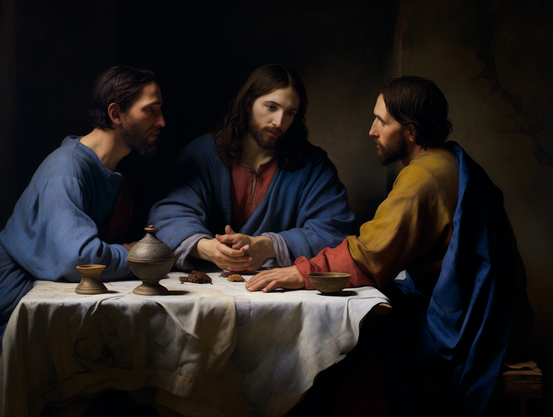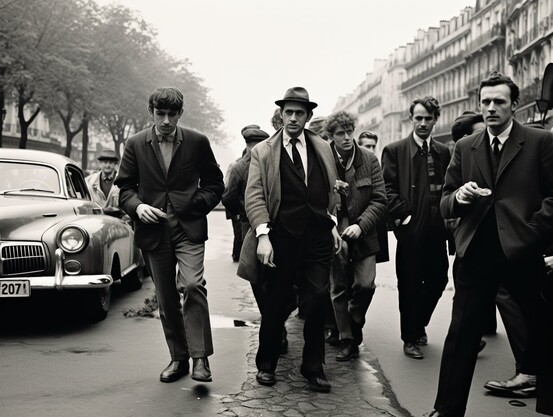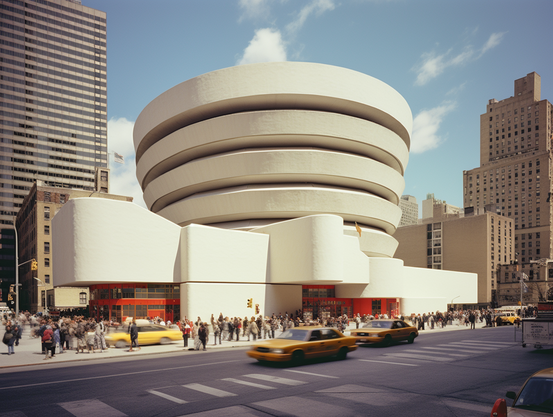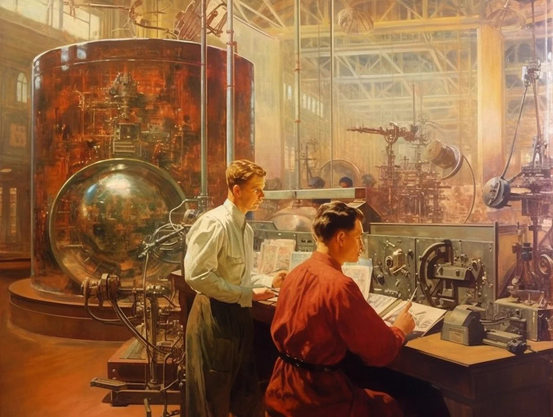Roland Meyer · @bildoperationen
909 followers · 290 posts · Server tldr.nettime.orgIn a recent talk, @nilspooker very convincingly compared the way visual patterns are reproduced and amplified in AI #ImageGeneration to the practice of art forgery: forgers like van Meegeren or Beltracchi were highly successful at not only matching but even overfulfilling the stylistic expectations attached to an artist's name. What I like so much about this comparison is that it allows us to think about the media specificity of fakery. While paintings have been forged ever since there was an art market, photographs are rather manipulated than forged, and what is considered inauthentic fundamentally differs between painting and photography.
Forging a painting is about imitating a style and falsely attributing a unique artifact to an individual author who did not create it. Manipulating a photograph, however, is usually not about authorship, but about the relationship between a reproducible image and the reality it's meant to depict. Faking photographs, therefore, traditionally meant somehow interfering with the photographic process, be it by staging events that never happened, retouching the photographic surface, or combining elements from different photographs into one image.
AI image synthesis may seem to resemble the latter, but it's actually more like forging a painting: there's no actual photo to begin with, only a statistical process aimed at fulfilling the visual expectations associated with a particular label – whether that label is »Vermeer« or »documentary photo«. But the history of art forgery also shows us, as Nils has pointed out, that these expectations are historically conditioned: What looked like a Vermeer in the 1930s now appears to be a rather crude forgery – and what appears like a photo today might indeed reveal us the limits of our visual expectations of what a convincing photograph looks like.
#imagegeneration #platformrealism
Roland Meyer · @bildoperationen
894 followers · 279 posts · Server tldr.nettime.orgFor AI #ImageGeneration tools like #Midjourney, historical dates usually do not indicate singular events, but rather, to quote Fredric Jameson, point to some generic »pastness«: visual styles and atmospheres replace any specific historical past. In #PlatformRealism, history dissolves into a chronological series of aesthetic »vibes« distilled from both historical footage and pop cultural imagery. Ask #Midjourney for a »documentary photo« from May 68 in Paris and you get a scene straight out of a Nouvelle Vague film, while an image from January 6, 2021 in Washington DC looks like an establishing shot from a generic Netflix thriller.
In #PlatformRealism, historical reality and cultural fiction are largely indistinguishable, and the typical tendency toward the dreamlike and fantastic can appear in the most unexpected places, as in Midjourney's version of a »documentary photo« of November 9, 1989 in Berlin. There is, however, at least one historical date that Midjourney refuses to »imagine«: September 11, 2001. When it comes to corporate censorship, some historical dates still seem to point to singular events and a traumatic reality beyond the filters of #PlatformRealism.
#imagegeneration #midjourney #platformrealism
Roland Meyer · @bildoperationen
894 followers · 272 posts · Server tldr.nettime.org»The ideology of attention seeking and sales pitches are built into how the images are produced, interpreted, and characterized. ... In that way, they are always advertisements for themselves.« Rob Horning with some important thoughts on #ImageGeneration & #PlatformRealism https://robhorning.substack.com/p/the-preponderance-of-the-object
#imagegeneration #platformrealism
Roland Meyer · @bildoperationen
884 followers · 270 posts · Server tldr.nettime.orgIf the default #PlatformRealism of #imagegeneration tools can essentially be described as a second-order aesthetic of generic images, it's particularly revealing what #Midjourney does when asked to generate the image of something specific, say a famous building. You’ve probably recognized the buildings depicted here, beginning with New York's Guggenheim Museum. However, they are anything but an accurate representations. Rather, not unlike caricatures, they are faithful only in the most recognizable features, while all details are treated quite generously. What they depict are less specific buildings than their reproducible clichés. However, this transformation took place long before AI: The more images of a famous landmark circulate, the more it has already become a generic icon.
While these buildings themselves have become iconic, their surroundings have not – and #Midjourney consequently replaces them with buildings and sceneries vaguely based on a certain generic idea of what New York, Rome or Venice should look like. Moreover, individual phases in the history of a famous landmark seem to be too specific to be reproducible - even if these phases, like the time when the Berlin Brandenburg Gate was located behind the Wall, lasted for decades and were extensively documented photographically. What these images thus show is how even the concrete and historically specific, like a famous building, can become generic and timeless, a more or less probable variant of a a recognizable, repeatable, and recombinable pattern. Reality enters #PlatformRealism only insofar as it has already become iconic.
#platformrealism #imagegeneration #midjourney
Roland Meyer · @bildoperationen
878 followers · 266 posts · Server tldr.nettime.orgWith each update, #ImageGeneration models promise us more »realistic« representations – but the »reality« these images represent has little to do with the one we live in. Rather, they are best described as #PlatformRealism.
In the age of networked online content, hardly any online text seems complete without at least one accompanying image. Many content management systems expect you to provide images for every post, even if they provide no additional information. These images are not mere illustrations, but attractors designed to make content more visible, shareable, and likable.
Other examples of generic images are stock photos or »key visuals« intended to convey the »identity« of a brand or product. Such images are typically »realistic« in that they are rendered in a style that conforms to our expectations of photographic »realism«. But instead of depicting concrete real-life situations, stock photos and key visuals stage abstract concepts such as competence, tradition, or whatever the client wants, transforming the realistic depiction of bodies and spaces into a stage for the symbolic manifestation of ideas.
Interestingly, this is also what »Socialist Realism« was about, according to Boris Groys – rather than reflecting the reality of real existing socialism, its mission was to convey »transcendental« messages by »incarnating« them in what only superficially looked like real people. It may be no coincidence that many of the images produced by Midjourney in its default mode have a striking affinity with the aesthetics of »Socialist Realism« – after all, they too are not depictions of real-world events, but »incarnations« of abstract concepts, as formulated in prompts.
What distinguishes #PlatformRealism from both earlier capitalist and socialist versions of generic »realisms«, however, is its statistical character. It's a second-order aesthetic fueled by the automated extraction of patterns from largely redundant combinations of generic images and concepts.
#imagegeneration #platformrealism



